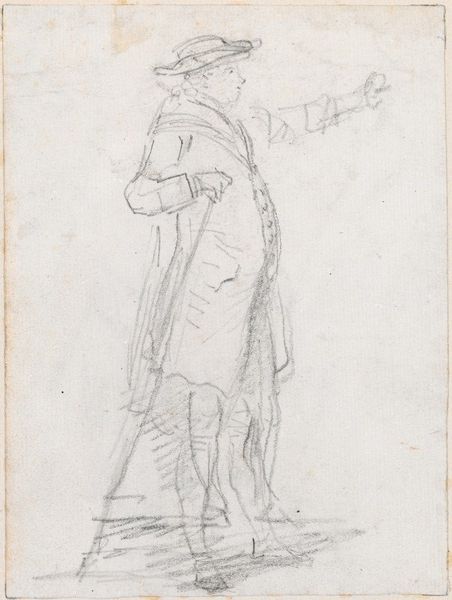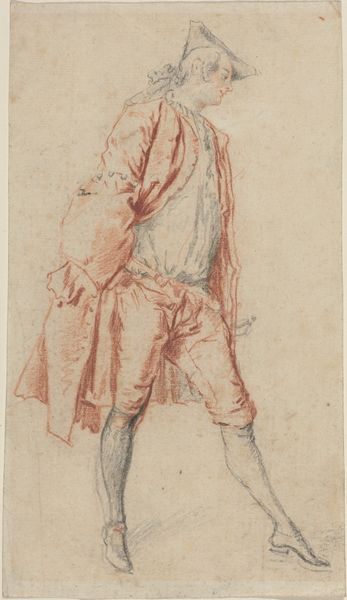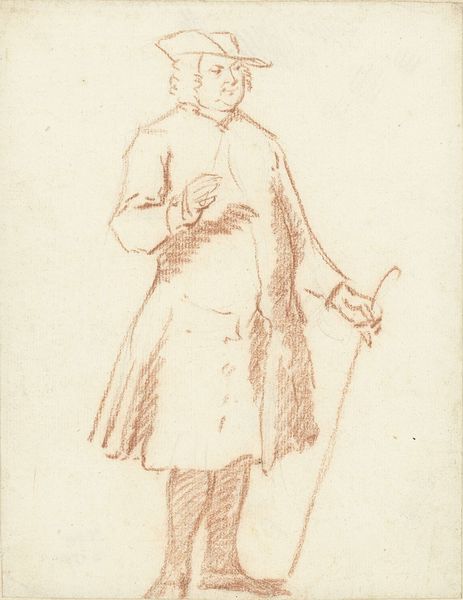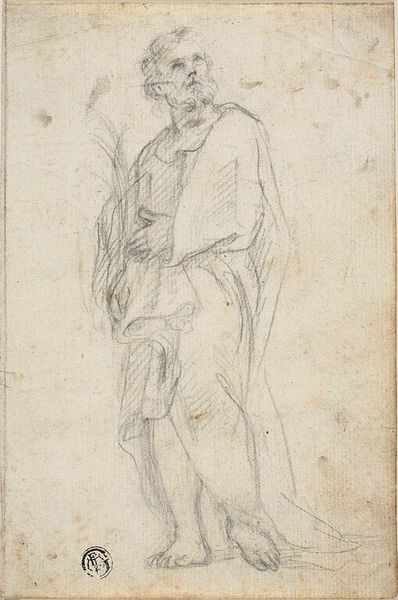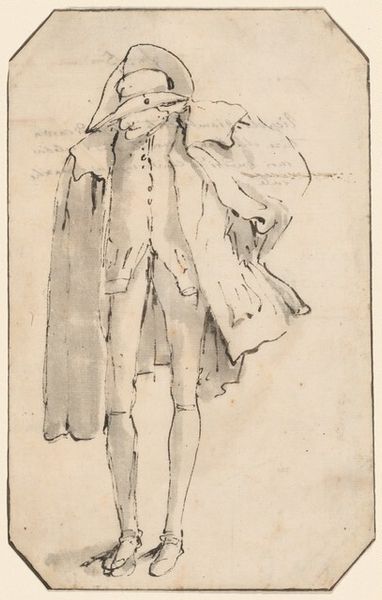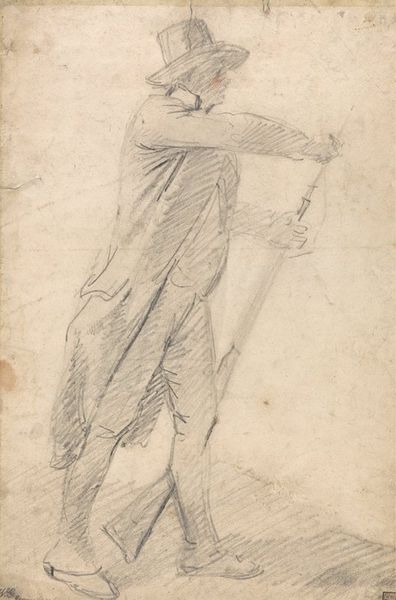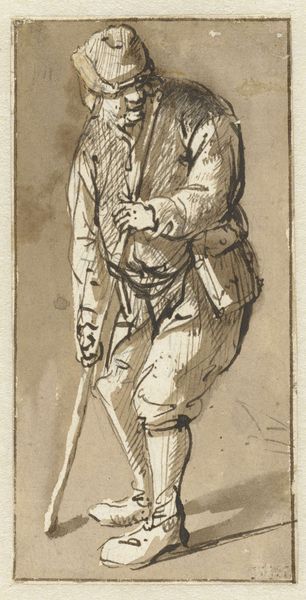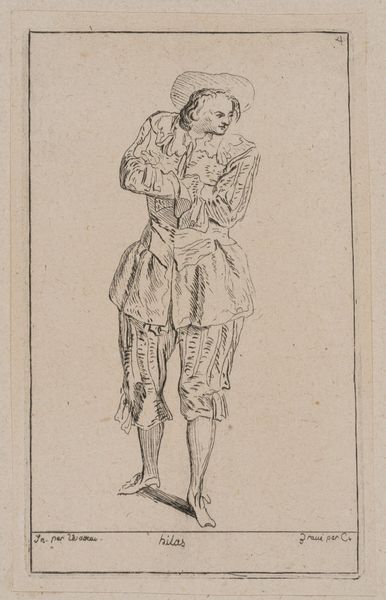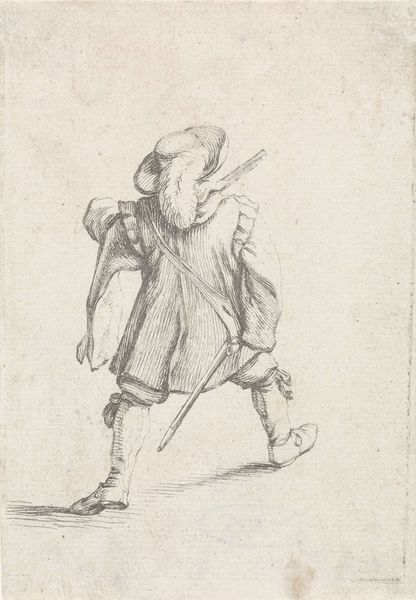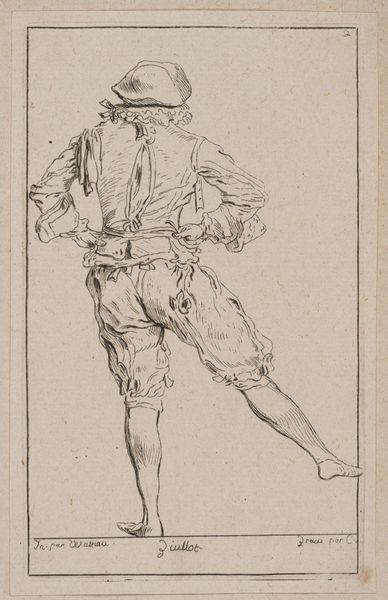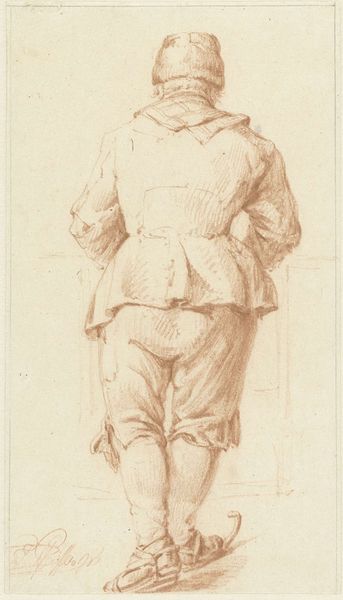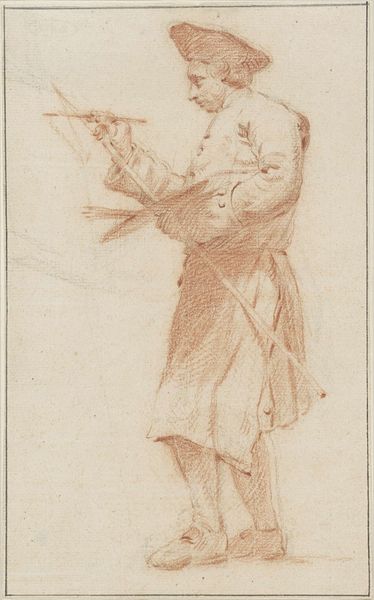
drawing, dry-media, chalk
#
portrait
#
drawing
#
figuration
#
dry-media
#
chalk
#
rococo
Copyright: Public Domain: Artvee
Editor: Here we have Watteau’s “Study of a Standing Dancer with an Outstretched Arm,” created around 1710 using chalk. There's something very fluid and graceful about it. What are your initial impressions? Curator: Formally, I'm struck by the economy of line. Observe how Watteau achieves volume and movement with minimal strokes. The interplay of black and red chalk creates a dynamic tension, wouldn't you agree? Editor: Definitely, it’s like he’s captured a fleeting moment with just a few marks. Does the asymmetry play into that effect? Curator: Precisely! The asymmetry contributes significantly to the drawing's dynamism. Consider the balance, or rather, the deliberate imbalance: the figure leaning, the outstretched arm juxtaposed against the weightier mass of the cloak. These choices actively destabilize the composition and inject a sense of vivacity. Note also how the textured rendering of the cloak draws our focus. What compositional elements do you see that contrast with that cloak? Editor: I see that the cloak's texture really contrasts with the smoothness of the dancer's exposed leg. The use of line in the leg almost flattens that part of the composition. Curator: Good observation. Furthermore, let us consider the semiotic properties inherent within the line itself: how it denotes both form and direction, implicitly guiding the eye across the plane of the paper. How might we understand this use of line within the structural context of the artwork as a whole? Editor: So it sounds like it's not just a quick sketch but a study in capturing movement using form, material, and composition in a really thoughtful way? Curator: Indeed. Watteau's formal mastery lies in his ability to synthesize disparate elements into a cohesive whole.
Comments
No comments
Be the first to comment and join the conversation on the ultimate creative platform.
